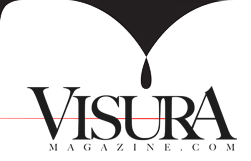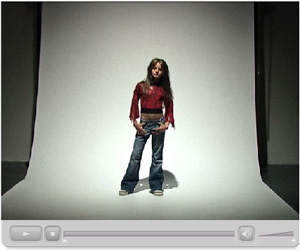
ANOUSH ABRAR | 50 Cent / Deja Vu
Issue 03, NYPH Special
There was a time when eleven-year-old girls would learn the words of songs they liked. They did this in order to sing in front of a crowd of familiar people such as their family and friends.Times change. My work is a reflection of this change.

VENETIA DEARDEN | Untitled
Issue 03 NYPH Special
My passion and curiosity for Somerset have been fuelled by my long-time connection, and recent disconnection with this area of the West Country. I grew up in Somerset and my family still lives there. I used to roam for miles on horseback through the fields, woodlands, and muddy bridle paths, and here I inherited a sense of freedom and possibility. This personal photographic journey within the boundaries of my homeland is testament to my love of Somerset.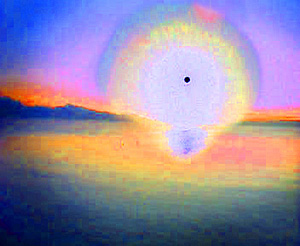
VIRGINIE OTTH | Petites Definitions
Issue 03 NYPH Special
Photographic images are defined today by their pixels. Although the medium derives its definition from a technical foundation, I prefer to work from a semiological perspective. This series comprised of "small (‘low’) definitions," uses "low quality" images from first generation mobile phones in relation to the tradition of representation in painting. The models and the stills (lives) are "illuminated" by the light of a computer screen and refer to portraits of the Renaissance period through the posture of the subjects and the strong directional lighting. The enlarged pixel, retained as a square of solid color, also resembles a "touch" of paint.
TABLE OF CONTENTS | Issue 3
Issue 03 NYPH Special
FeaturingErnst Haas
Luis González Palma
Jeff Jacobson
Mayra Montero
Anna Lehmann-Brauns
Grant Worth
Sara Roitman
Edith Maybin
Patrick Weidmann
Venetia Dearden
Virginia Otth
Louie Palu
Anouch Abrar
Mondongo
Juraj Lipscher
Joni Sternbach
Manolis Baboussis
Seba Kurtis
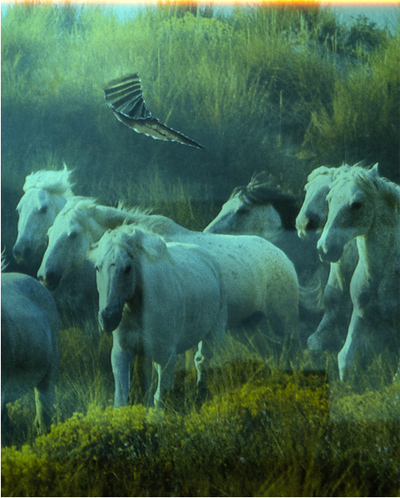
SEBA KURTIS | Stateless
Issue 03 NYPH Special
I had to leave my hometown for economic reasons. According to the system I was stateless and without permission to stay in Europe. When you face deportation, you realize that everything you have can disappear in just one day. The UN Declaration of Human Rights states that everyone has the right to leave his or her own country. However, this well-intentioned governmental principle disregards the individual, as each state has its own conditional terms. These systems maintain the right to decide whether people can stay or not based on such superficial factors as place of birth.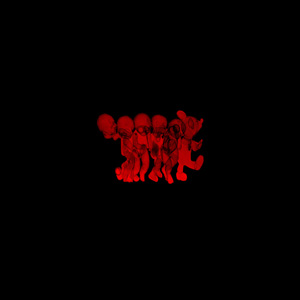
SARA ROITMAN | Evident-Invisible
Issue 03 NYPH Special
EvidentInvisible is a visual metaphor about illegal immigration and human trafficking as a physical and commercial border between humanity and the market.In developing this work, I used an x-ray machine, which we are all familiar with from airports, in combination with a digital camera. I created scenarios that allude to the dream the immigrant pursues through a journey with an uncertain destination, a journey without solid ground.
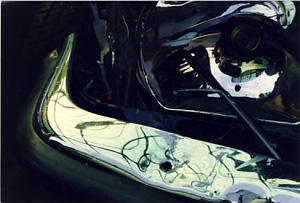
PATRICK WEIDMANN | Untitled
Issue 03 NYPH Special
I would like to accentuate the specifics of the photographic medium. Not just take pictures. The main subject is photography itself.I take pictures of fragments. They are metaphors for what should happen or what should be seen. I want the subjects to disappear behind the idea of being objects, even if they are obsessions. I want to trigger the collusion between the promise of instant happiness and the dark side of death strategies, that which is commercially produced to make us participants in our own end.
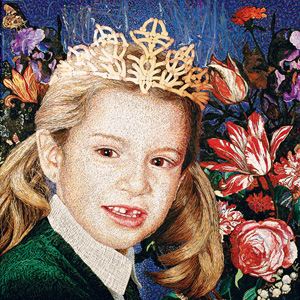
MONDONGO | The Doll House
Issue 03 NYPH Special
Sometimes my husband tells me I am a tyrannical artist. And there may be some truth in that, because after hours of discussing the conceptual implications of the images we choose, I get tired of talking and all the theoretical digressions make me angry. I prefer to keep quiet and put my energy into working on the painting. The physical encounter with the work is primordial for me. When I am working with my hands, I am conscious of my mind functioning in a different way. I am palpably aware that practicing my technique opens a road to the future for me; it sparks new ideas that I would not arrive at purely through abstract discussion.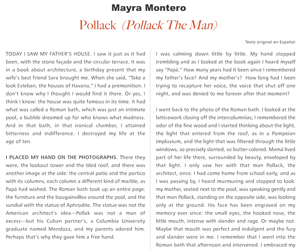
MAYRA MONTERO | Pollack (Pollack The Man)
Issue 03
TODAY I SAW MY FATHER’S HOUSE. I saw it just as it had been, with the stone façade and the circular terrace. It was in a book about architecture, a birthday present that my wife’s best friend Sara brought me. When she said, “Take a look Esteban, the houses of Havana,” I had a premonition. I don’t know why I thought I would find it there. Or yes, I think I know: the house was quite famous in its time. It had what was called a Roman bath, which was just an intimate pool, a bubble dreamed up for who knows what madness. And in that bath, in that ironical chamber, I attained bitterness and indifference. I destroyed my life at the age of ten.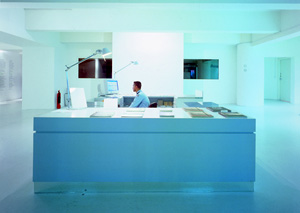
MANOLIS BABOUSSIS | Occupations
Issue 03 NYPH Special
My photographs are untitled; they are the product of an action of the gaze: recognition. They juxtapose the experience of the visible world with a topos of my biography.In the early 1970s, I became interested in the plight of human existence and developed a sensitivity to its influence on architecture and the spaces of psychiatric hospitals. In 1973, pictures were not processed in the form of photo-tableaux.
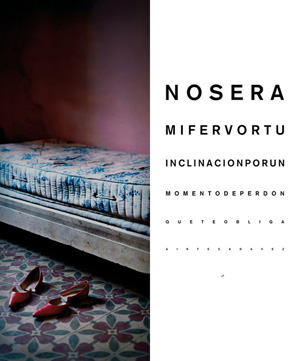
LUIS GONZALEZ PALMA | Tu/Mi Placer
Issue 03 NYPH Special
You/My PleasureThis collaboration is a reflection about surreptitious violence, perceived as a form of upbringing and absorbed from childhood. This violence is transformed into an apparently normal manner of living together—the accepted, sublimated forms of coercion associated with low self-esteem and an irrational desire for power that both stem from personal insecurity and can lead to manipulation, regardless of social or educational levels.
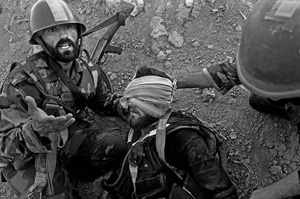
LOUIE PALU | The Void of War
Issue 03 NYPH Special
When I got back to Kandahar Airfield (KAF), the main NATO Base in Southern Afghanistan, west of Kandahar City in the summer of 2008, I wasn’t sure I would have the energy for my next assignment. I had been “on the line” for almost two months now. My next project would be to photograph US Marines in the dreaded Garmsir District in Helmand Province. Luckily, earlier that day when I was with the Canadian Soldiers, I caught what they called the “Montreal Express,” a helicopter ride back from a Forward Operating Base (FOB) to KAF. It was horseshoes for me: better in a helicopter than riding in a vehicle waiting for an IED to blow me sky-high after covering two months of frontline fighting.
Guest Intro by Daniel Power
Issue 03
The photography book is a decaying carcass as we know it, ready for the carrion cleaners. Perhaps not the physical object, but its traditional and historical means of production, its Marxian raison d’être. We, not as bookmakers but as book publishers, are dying off. Good riddance.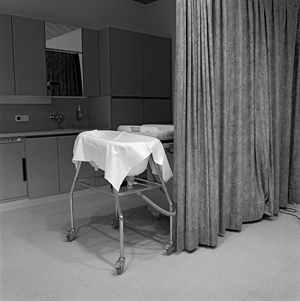
JURAJ LIPSHER | Body Shops
Issue 03 NYPH Special
We are pleased with our ability to mutate human bodies from weak to strong, from ugly to beautiful, from aroused to slackened, from fat to lean. We build chambers for these tasks and we fit them with machinery and apparatus and paraphernalia and equipment and gear. A child is born, a carnal need is assuaged, a sagging breast is lifted, a man dies. We stand ready, 24/7, our polished tools poised. We are like medieval alchemists working on our opus magnum, converting blemished mortals into immaculate angels, our brightly lit laboratories humming silently, awaiting the next transmutation. Standing in such rooms, I try to push my gaze beneath the stainless steel surfaces to find some answers despite the glare of fluorescent lamps.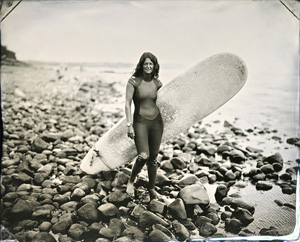
JONI STERNBACH | SurfLand
Issue 03 NYPH Special
The worldwide community of surfers, which is the subject of my tintype portraits called SurfLand, forms a subculture that spans continents, class, age, and gender. My work has taken me to the prized surfing beaches of America’s East and West coasts and my photographs have become a compilation of people’s diversity.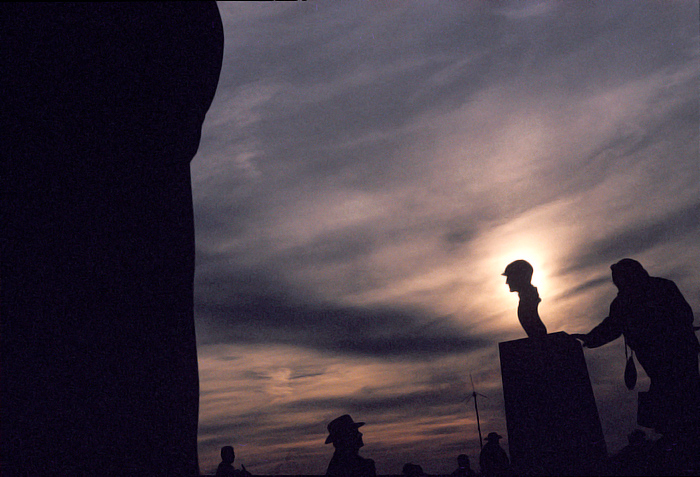
JEFF JACOBSON | In the USA
Issue 03
Kitty Hawk, NC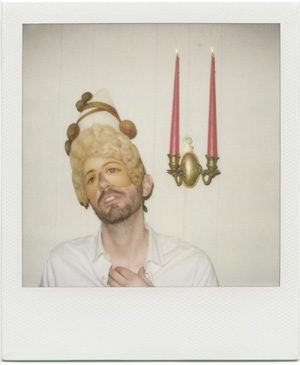
GRANT WORTH | Look Who’s Coming After Dinner
Issue 03 NYPH Special
I created Guess Who’s Coming After Dinner in March through October of 2008. This was a stressful period of time, both globally and personally and a feeling of anxiety and adjustment pervaded. There was a sense that something old was dying and that it was about to be replaced. The current administration was coming to a close, its successor to be determined. I was entering my twenty-ninth year of life on Earth. Astrologically known as “Saturn’s Return,” this is a point in which a person crosses over a major threshold into the next stage of life. There seemed to be a rebirth just over the horizon. The world and my own consciousness were about to reveal the beginnings of whatever was coming next.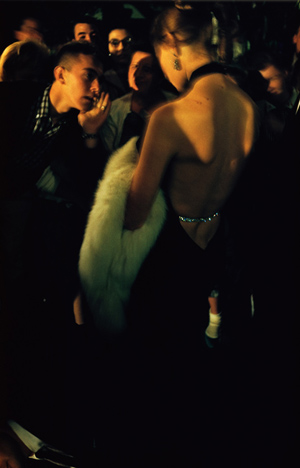
ERNST HAAS | Color Correction
Issue 02s
I looked at an apple for such a long time until it became the first apple I had ever seen.I was so excited that I called a friend to tell him my experience. But how could I find the right words for what I had experienced? How could I describe my visual sensations with such literary words as red, yellow, green, shining, and round after this movement of nuances and counteractions in form and color, even in touch and smell?
+ Introduction by William Ewing, Curator
+ Text by Alex Haas

EDITH MAYBIN | The Tenby Document
Issue 03 NYPH Special
I return to these pictures once in awhile. The more I look into them and read the feelings they stir in me, the more I think perhaps these are stories about my mother.It is a relationship of mystery. I am not being poetic; I just do not understand it or how it works. Then I turn around and there is my daughter.
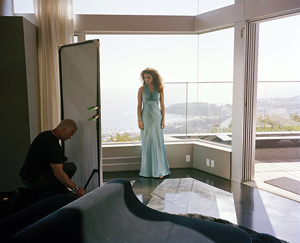
ANOUSH ABRAR | Californication
Issue 02s
The film studios, the celebrities, the entertainment capital of the United States—the state of California revolves around the film industry and its success. Projecting an image of fame and fortune, beauty and happiness, Hollywood draws people like a magnet. I started this photo project in Los Angeles because I wanted to get as close as possible to the young people who flocked to this city seeking fame and fortune.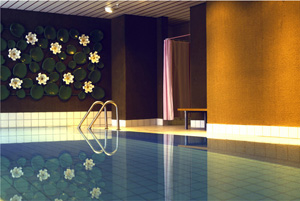
ANNA-LEHMANN BRAUNS | Works
Issue 03 NYPH Special
Interiors are the subject of my photographic work. I choose the public spaces of restaurants and hotel lobbies, bars or just lost corners in a cinema foyer or a disco. The rooms are always deserted and devoid of human presence. The basic idea of my work is the symbolism of longing for what is a fleeting, ephemeral life, its remembrance, and the desire to preserve it.




